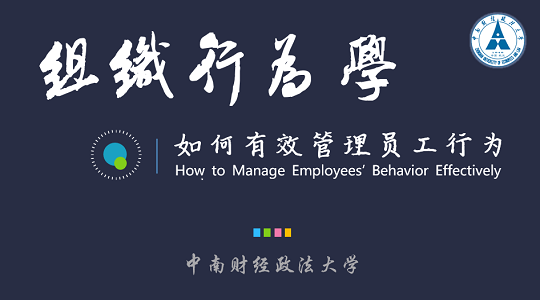
当前课程知识点:国际医学会议交际英语 > Chapter 12 Understanding Conference Etiquette > Exercise > Chapter 7 Part 3-2
Seven
tell the audience about any problems
in interpreting your results
Don't worry if there is not unnecessary
one unique or clear way to interpret your results
You can admit such difficulties
Note that modal verbs such as
might could should
and adverbs of concession
such as although even though despite of the fact
nonetheless nevertheless
and verbs that express a hypothesis
is rather than 100% certainty
such as think
believe
imagine
Such phrases are useful for making
what you are saying sound more tentative
Use verbs such as interpret
confirm appear
which are impersonnel
This allows speakers to distance themselves
from their results
and to give the impression that the results
do not depend strictly on them personally
Eight
Explore whether your results were expected or not
If your results were not
what you were expecting
the audience will be curious to know why
Try to present the reasons in a fact way
or in other interesting way
Look at the following examples
Nine
Be upfront about your poor
Be upfront about your poor
uninteresting
negative results
and turn your negative
unexpected results into an opportunity
for collaboration
If you have
or appear to have negative results
the audience will certainly be sympathetic
or probably relieved
because most of them will
have been in the same situation
so admit to the audience that
the results were not what you were hoping for
Never hide the poor results
or invent anything to make them more interesting
Say what you plan to do next
to resolve these problems
or ask the audience for help
Have they experienced this
What did they do
Encourage them to come and talk to you later
Ten
encourage discussion and debate
Be ready to discuss any limitations
in the research and open for other possible
approaches and interpretations
Then you will sound more credible
you will seem confident enough
to give the audience
space to suggest alternative interpretations
You will sound less arrogant
Your aim is not to lecture to the audience
like a university professor
but rather to discuss your ideas with them
It is important that your tone of voice
is friendly and not hard
You do not want the audience
to be passive listeners
but to be active in asking questions
both in the Q&A session
and after the presentation at the bar or social dinner
Next we’d like to share with you some useful phrases
in presenting results
They are listed below
So much for results
Let's look at how to present discussion section
Function of discussion
The basic functions of discussion are as follows
Expounding the interrelations
among the observed facts
Showing the underlying causes
the effects
and the theoretical implications of the facts
Leading to the conclusion
The components of discussion usually include
the following five parts
one
Analyzing the data
Try to present the relationship between the data
Bear in mind that
in a good discussion
what we need to do is to discuss the results
Two
Expounding viewpoints
Give the judgment evaluation and analysis
and show how the results and interpretations
agree
or contrast with previously published works
Three
Pointing out doubts
Point out any exceptions or any lack of correlation
and state the unsettled points or doubts
limitations failures as well as points for attention
if any
Four
Stating the significance
Point out the theoretical implications of the paper
as well as any possible practical applications
Last five
Arriving at a conclusion
Provide the outcome of the research
as clearly as possible
and summarize the evidence for the conclusion
Five
Suggested ways to present discussion
There are many tips and strategies
presenters can use to present discussion
but the followings are most powerful ones
that good presenters have used over the years
Hopefully
they will help you to nail the discussion
section in your next presentation
One
Making a comparison between the results
and the original hypothesis
Let's look at the following examples
Two
Presenting a further explanation of the results
Here are some examples
Three
Making conclusions
or inferences
Look at the following examples
Four
Implying the limitations of the present study
Here are some examples for your reference
Five
Suggesting the practical applications
or further study
you can say
Next
we’d like to share with you some useful phrases
in presenting discussion
They are listed below
First
用于下结论或表述不支持结论
2用于分析原因 结果和指出研究的可能机理
3用于将本研究与其他研究相比较
4用于表述研究的局限性
5用于指出研究的现实或潜在意义
6用于前瞻性说明
Next expressing opinions
and probabilities in Discussion
Highlighting limitations
Outlining possible applications
and implications of your work
Outlining the possible future of your findings
At last
here are 10 most common mistakes
when presenting discussion
By avoiding these
you’ll make your presentations stand out
One
Starting with limitations instead of implications
Two
Going overboard on limitations
leading readers to wonder why
they should read on
Three
Failing to acknowledge limitations
or dismissing them out of hand
Four
Making strong claims about weak results
Five
Failing to differentiate between strong and weak results
as you make conclusions about them
Six
Lapsing into causal language
when your data were correlational
Seven
Repeating the introduction
Eight
Restating the results
without interpretation or links
to other research
Nine
Presenting new results
presenting new results
such data belong in the results section
Ten
Offering no concluding statements
or ending with the limitations
Now let's move to the part of practice
Ah.
-Exercise
-Exercise
-Exercise
-Exercise
-Exercise




